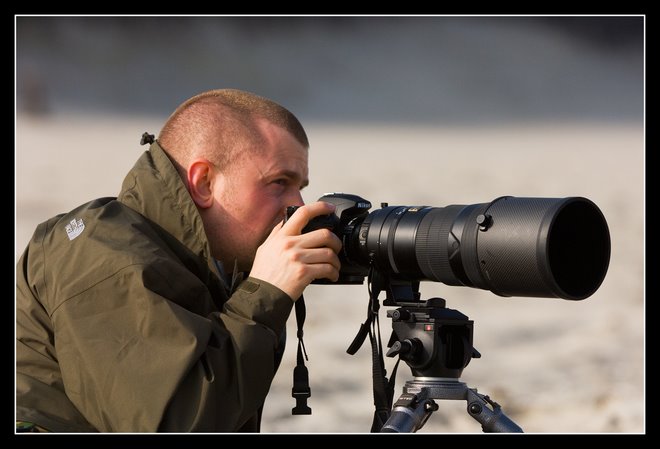
The cover of this book claims to teach you "photography secrets from one of the world's top shooter", and 256 pages later, I feel that I have definitely gotten an insight into Joe's work ethic, and understood some of the reasons why the publisher's suggest he is a "legendary magazine photographer.
The book was published in January 2008, and I received it from Amazon (click the picture to be linked through) yesterday. After a busy Saturday, I had a free Sunday, so sat down to read the book. And didn't put it down until I had finished it......
Joe McNally has been a photographer for over 30 years, and his career has been spent shooting for magazines such as Life, People, Time, Sports Illustrated, and National Geographic. In the first two thirds of the book Joe shares these experiences with the reader. In each double page spread he presents a photograph from his portfolio, and describes, in a casual manner, some of his reasoning behind the shot, and how he achieved it technically. Sometimes this is done by relating to the shot itself, and sometimes by describing a conversation he has had or a situation he has been in, and then illustrating it with a photograph. But either way, it makes entertaining reading.
One of Joe's mantras is "the only good light is available light, and by that I mean any light that is available", and he really is the master of off camera lighting. For most of the shots he describes how the scene was lit, whether it be a white sheet from the motel he stayed in the night before ("I am a bed sheet thief") to act as a diffusor on a window, or a combination of softboxes, grids, and snoots.
The final third of the book, after a short description of the gear he uses (he is a Nikon shooter, and has shot many advertisements for them, and also made an instructional Nikon lighting DVD called "The Speed of Light" - worth a watch) covers various experiences he has been in, like the time he threw up 50 times whilst shooting a weightless flight at the Russian space camp, or the time he shot 10 frames of a pro baseball player, before realizing he hadn't advanced his film a single frame. But with each story he illustrates, he always has a message to the reader.
One thing that struck me about Joe is that in almost every shot he shows, he has had to work quickly, with high pressure. Typically his subjects give him around 10 minutes to shoot them, and, although he often spends hours before a shoot setting up his concept, he needs to make sure that his shoot works first time, and if not, the reshoot must take place at the same time. You can definitely see shots where he has made mistakes, or where there are visual errors, but that isn't the point. Keep your eye to the camera at all times, or you will miss a shot, says Joe, and he has stuck true to this.
This book is a definite recommendation for anyone who wants to start out in the field of photojournalism, and wants to hear from someone who has been there, done that, but for everyone else, it is an entertaining read, and there is a lot that any photographer can learn from Joe's musings.





